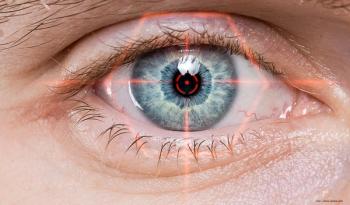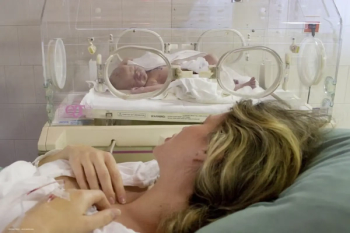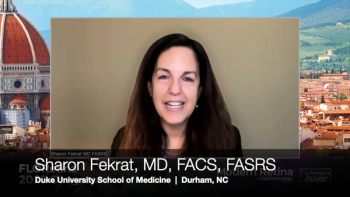
- Ophthalmology Times Europe January/February 2025
- Volume 21
- Issue 1
- Pages: 16 - 19
An accessible, free resource on genetic eye disease is changing patient education
Mariya Moosajee, MBBS, BSc, PhD, FRCOphth, discusses how Gene Vision is improving patients' lives on a global scale
Mariya Moosajee, MBBS, BSc, PhD, FRCOphth, is a professor of molecular ophthalmology at University College London, and a consultant ophthalmologist specialising in genetic eye disease at Moorfields Eye Hospital, London, UK. She is also the creator of Gene Vision (www.gene.vision), a free, accessible and comprehensive web resource for patients and clinicians who need information on genetic eye disease. Funding from the National Institute for Health and Care Research and Retina UK has enabled Prof Moosajee and her colleagues to construct a website with a full suite of accessibility options for visually impaired patients. Speaking to Ophthalmology Times Europe, Prof Moosajee reflected on the growth Gene Vision has seen since its 2020 launch and the future of the project.
Hattie Hayes: Tell me who is using the Gene Vision website. Are the users patients or clinicians? Do you have any data on which resources are the most popular?
Mariya Moosajee, MBBS, BSc, PhD, FRCOphth: Gene Vision is a knowledge sharing resource. There are content pages for patients providing details of their condition, gene, any treatments, research and support groups that can help, all written in lay language and proofread by patients and the relevant medical charity. In addition, there are specialised pages for healthcare professionals, which includes anyone working with affected individuals and families. Since the website launched 4 years ago, we have had over 637,000 visitors, from over 210 countries across the world, which is amazing! The majority of those users are patients and relatives. From the clinical side, it is primarily clinicians; ophthalmologists in training and consultants who are seeing patients with genetic eye disease in their clinic, but also paediatricians and clinical geneticists.
The highest-viewed page is on childhood nystagmus, which has had 23,000 visitors. The next most common [condition-specific] page is cone and cone rod dystrophies, followed by dominant optic atrophy. What is also interesting is that the page with the second-highest views is on genetic basics and inheritance patterns, such as autosomal dominant, recessive and X-linked. A high number of people have looked at the structure of the iris, pupil and retina. Other websites may mention these rare diseases, but do not have the level of detail that can explain the condition fully to the reader and put it into context with anatomy, disease gene, inheritance, family planning options, driving standards, research, clinical trials et cetera.
For example, lets consider aniridia; nystagmus is a feature, but patients may ask, ”What does aniridia mean?” You can read all about that, but if you do not know what the iris is, you can refer to that. If they’re looking at potential therapies, then they can find out what the latest advances [are] for their condition, and then go on to read about the principles of the therapeutic approach with a whole page on therapies under research, and it explains the basics for them, which I think is really important.
HH: How does Gene Vision differ from other health-focused web resources?
MM: Gene Vision has been specifically designed for patients suffering from genetic eye disease. It’s written by experts in the field. Every entry has been reviewed by patients with lived experience, and by charities supporting people with rare diseases. The design of the website is intended for sight-impaired people, so it is clear and easy to navigate, making it easy for anyone who is visually impaired or blind. We’ve tested every speech software and screen reader on. We use plain colours, contrast and font size for accessibility. Although it looks simple, it is constructed from an accessibility perspective. Professional digital accessibility consultants, who are deaf and blind themselves, tested it and gave us feedback. It’s designed for the people who most need it.
The other difference with this website is that there is no advertising. I am very concerned about bogus treatments being pushed to vulnerable patients. Gene Vision was developed because patients didn’t have a clear, understandable, trustworthy resource. We have a moral responsibilityto provide accurate information which is safe, understandable and reliable.
HH: I noticed, when I was on the website, that even the chatbot feature has an audio integration with Alexa. Do you have other tools or other enhancements that are coming soon?
MM: One of the really exciting updates we have just made is adding Google Translate to the website. Google Translate itself is used by about 500 million people worldwide daily. It offers translation of the website in over 243 languages. The reason that was important to me was a couple of years ago, I was giving a keynote lecture in Spain at a patient information day. Although they had translators, the key feedback I received was that Spanish-speaking patients were finding it really difficult to access information on their conditions. We have now tested the translation tool with various patients and clinicians who speak several languages, like Mandarin, Arabic, Spanish, French and Hindi. The majority were pleasantly surprised at the level of translation. It wasn’t 100 per cent accurate, because our genetic terms are quite technical and niche, but the majority was correct and understandable. Having this translation tool built in means that the website has become even more accessible.
Our chat bot is powered by artificial intelligence [AI], so the more questions that the chat bot gets asked, the better it is in its replies. I think that Alexa was a game-changer for the website. People who have rare conditions, who are progressively losing their vision, can now just say, in their own home, “Alexa, tell me about retinitis pigmentosa. Am I going to be able to drive? Are there any trials underway that could help me? I’ve got a diagnosis of a gene called USH2A, what does that mean?” And Alexa will speak to them with the relevant reply. It’s a game-changer for people to be able to garner information.
One more thing we’ve implemented this year is the addition of audio descriptions to all the images on the website. On other websites, if you have a speech programme and it’s going through the page and it hits an image, if there’s no audio description attached to it, it would just say “image.” On Gene Vision, if it hits an image then the speech software will read the description out. For example, it may say, “Image is a view of the field of vision experienced by a patient with retinitis pigmentosa. It shows a constricted field with tunnel vision. The patient is only able to see in a small central area.”
HH: Tell me what the patient response been like. What are patients and their clinicians saying about Gene Vision?
MM: I have had so many letters to thank me from patients, because for the first time, they actually understand the information about their condition. We put the link to Gene Vision in every patients’ medical letter, so after they have been told their diagnosis in clinic, they have a link to read about it and digest it in their own time. But what’s really important is that they can then share that information with friends, family, teachers or other healthcare professionals. Patients may want to share information with their work colleagues to help them understand why they’re having certain modifications in the workplace or finding certain tasks more difficult.
Gene Vision has helped patients get access to charity support. Patients often feel very isolated following a diagnosis, but on every single condition page, it will give them links to who they can get in touch with for support and counseling. Patients have the ability to now register their interest through Gene Vision so they can receive updates or be contacted for trials [or] research relating to their specific condition. There is also a link to Research Opportunities at Moorfields, and we have had several patients who have been enrolled into clinical trials through this connection.
A lot of families look at the family planning advice section. Couples or individuals who want to have more children, or go on to have children, can learn more about genetic testing and options such as pre-implantation genetic diagnosis. This is a form of in vitro fertilisation, where the fertilised embryo is screened to see if it is carrying the mutation, and only healthy embryos are returned for implantation in the uterus. In the past, some people have made the decision not to have children because they didn’t want to pass on the disease change, but this website shares information that gives them an opportunity to pursue genetic testing and think about ways to not pass it on. These are the kind of stories that have really impacted patients.
HH: On the clinical side, what would you like ophthalmologists to know about the website, especially anyone who’s early-career?
MM: The gene cards are particularly useful. I designed those as a quick reference guide, because when you’re sitting in clinic, and you know that the next patient has a particular genetic result but you have little knowledge of what the gene does and how it is causing the disease, you can get all the information easily. Just type the name of the gene into the search. It’s not fully exhaustive and we are always adding more genes and conditions. But most of the common genes are listed in an accessible, easy-to-read format explaining the action, where it’s expressed, what the protein does, the corresponding phenotype, and what investigations are needed. It is a really great resource, clear and cleanly laid out. So, please, access it!
HH: What have been the biggest wins for you in the 4 years since Gene Vision launched?
MM: The reach of the website. The fact that it’s being used in over 210 countries; I did not expect that. And when I look at some of the countries, I feel really proud, because I know people are reading this information in places where they may not have access to highly specialist services. Around 35% of the users are from the US; that was surprising, because the site is relatively UK-centric. Fourteen per cent of users are from the UK, 10% from India, followed by Australia and Canada. We get around 9,000 new users per month, which, again, just blows me away. Around 50% of the visitors come back and revisit the site.
It’s like a reference book. People trust Gene Vision and will go back several times, which is so meaningful. People can also return to it as they move through the different stages of their life. As kids get older, for example, their parents might start thinking “Will my child be able to drive?” Then they can look for information about driving or support at school or in higher education. And eventually those patients grow up and can seek it out themselves; for example, if they’re planning to start a family. It’s not just a resource specifically for patients or clinicians, it's helpful to anyone who wants to learn more about rare genetic eye diseases. If there are any conditions or genes missing, or information you think should be up there, please, send us an email and we will endeavour to add it and update the site. I encourage you to reach out.
Patient testimonial: Kevin Prince
As a person living with retinitis pigmentosa, I regularly use the Gene Vision website. I find it to be a fantastic resource of information and advice whether you are newly diagnosed or have lived with your condition for many years. Its clear, easy layout and menus, plus chatbot, make it simple to navigate your way around the site. I particularly like the updates on therapies and research. The sections on support and advice for newly diagnosed patients is invaluable. I wish it had been around when I was first diagnosed 30 years ago. I would wholeheartedly recommend anybody living with a genetic eye condition, or their relatives, to use the site. There is no other resource quite like it that is so informative and up to date with everything in one place.
Mariya Moosajee, MBBS, BSc, PhD, FRCOphth | E: [email protected]
Prof Moosajee is a professor of molecular ophthalmology at UCL Institute of Ophthalmology, group leader of ocular genomics and therapeutics at the Francis Crick Institute, and a consultant ophthalmologist at Moorfields Eye Hospital and Great Ormond Street Hospital for Children, all in London, UK.
Articles in this issue
10 months ago
IOL design puts a new spin on vision10 months ago
Helping patients with glaucoma manage mental health10 months ago
Shifting the narrative around dry eye disease10 months ago
A new home treatment for amblyopiaNewsletter
Get the essential updates shaping the future of pharma manufacturing and compliance—subscribe today to Pharmaceutical Technology and never miss a breakthrough.













































